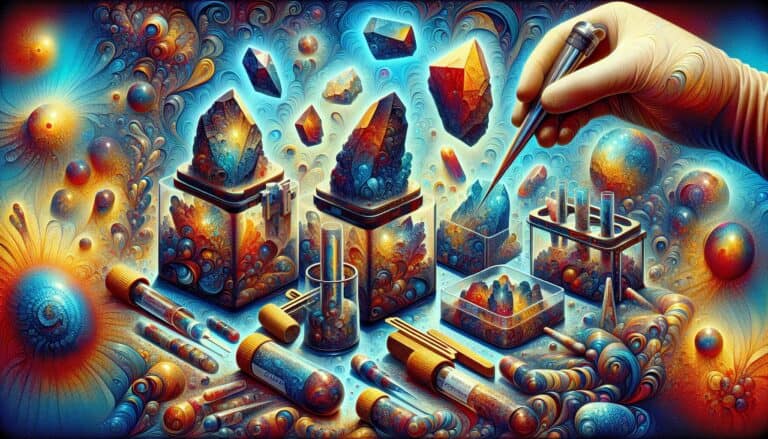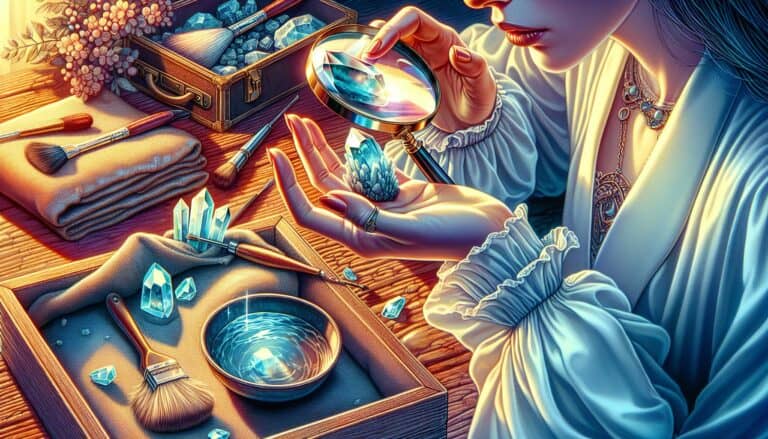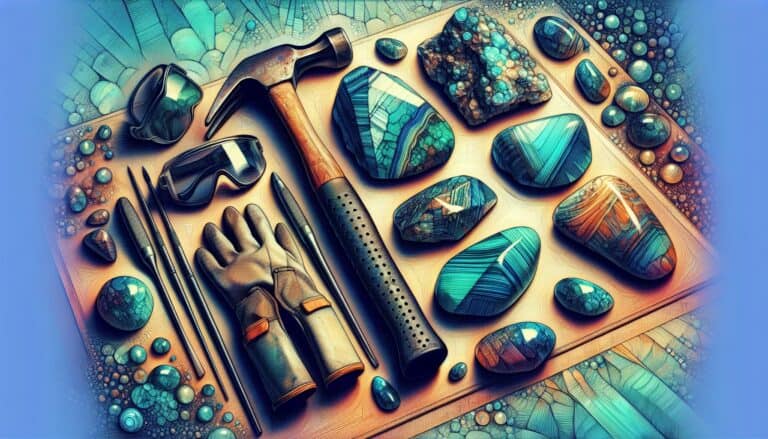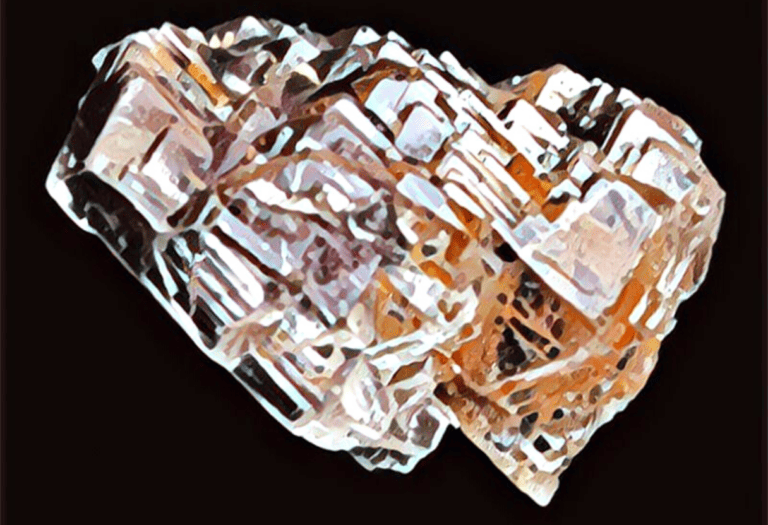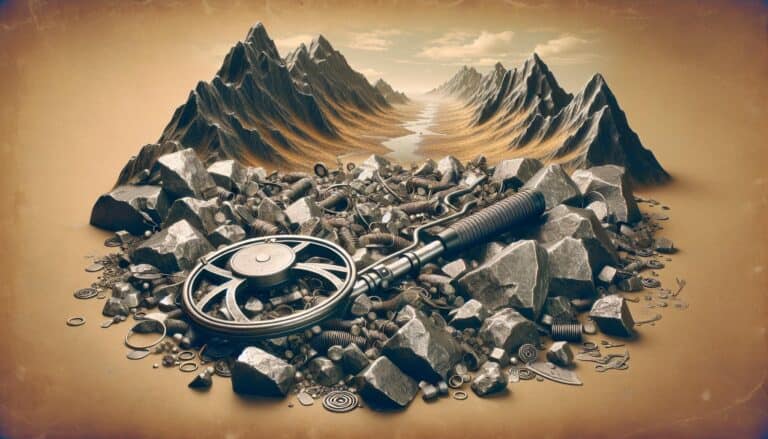Discovering the beauty of diopside starts with knowing how to identify it.
This striking mineral, with its rich green color, is not just another pretty face in the gemstone world. It’s unique, it’s vibrant, and it’s waiting to be recognized by you.
You might find yourself wondering, “What sets diopside apart from other minerals?” Don’t worry, you’re about to learn the key characteristics that make diopside stand out. From its distinctive color to its physical properties, you’ll be spotting diopside like a pro in no time.
Whether you’re a gem enthusiast or just starting your mineral collection, understanding how to identify diopside is essential.
Get ready to dive into the world of this captivating gemstone and add another skill to your rockhounding toolkit.
To identify diopside, examine for rich green color and monoclinic crystals. Test hardness (5.5-6.5 on Mohs scale), conduct a white streak test, and check for non-magnetism. Diopside exhibits single refraction and a refractive index of 1.663-1.699, with a specific gravity of 3.22-3.38. Look in marble or peridotite nodules.
How to Identify diopside Through Testing
When you’re on the hunt for diopside, several tests can help you confirm your find. From simple visual inspection to more complex refractive index testing, knowing what to look for is crucial for accurate identification.
Visual Inspection
First things first, Visual Inspection is key. Diopside’s signature rich green hue is your initial clue. Check for transparency and look out for two-tone coloration which is a common characteristic. The crystal structure should be monoclinic, typically appearing as prismatic crystals.
The Streak Test
The streak test is relatively straightforward. Use a piece of unglazed porcelain to scratch the mineral and observe the color of its streak. A genuine diopside will leave a white streak, helping to differentiate it from other minerals.
Magnet Test
Performing a Magnet Test can give you quick insights. Diopside is not magnetic, so if your sample is attracted to a magnet, it’s likely not diopside.
Hardness Test
Diopside falls at about 5.5 to 6.5 on the Mohs scale of hardness. You can perform a Hardness Test using simple tools like a steel file (which ranks about 6.5) to see if it can scratch your sample.
Birefringence Test
Diopside exhibits birefringence when viewed under a polarizing microscope. You’ll notice a change in brightness as you rotate the specimen, indicating it’s doubly refractive.
Checking The Diaphaneity
Diaphaneity describes a mineral’s ability to transmit light, whether it be transparent, translucent, or opaque. Diopside ranges from transparent to opaque, so this is an aspect that can be checked with a light source.
Single or Double Refraction
One defining characteristic of diopside is that it is double refractive. This means light splits into two rays as it passes through, creating a doubling effect when viewed through a lens known as a loupe.
Refractive Index Test
Testing the refractive index is another way to identify diopside. For accurate measurement, professional gemological equipment is recommended and diopside’s refractive index ranges from approximately 1.663 to 1.699.
Finding The Specific Gravity
The specific gravity of a gemstone is a measure of its density. Diopside’s specific gravity generally falls between 3.22 and 3.38. A hydrostatic balance or electronic scale designed for gemological use is needed for this test.
Identifying Diopsides in the Field
When you’re identifying diopsides in the field, it’s essential to take into account the location and associated rock types. You’ll often find diopside in marble or in peridotite nodules in volcanic rocks.
Recognizing Potential Diopside Rocks
Scouting potential diopside bearing rocks? Look for deep green coloration and crystal structure. Also, considering the geological context can provide clues—the presence of rocks like gneiss or schist may indicate potential diopside finds.
Physical Characteristics of diopsides
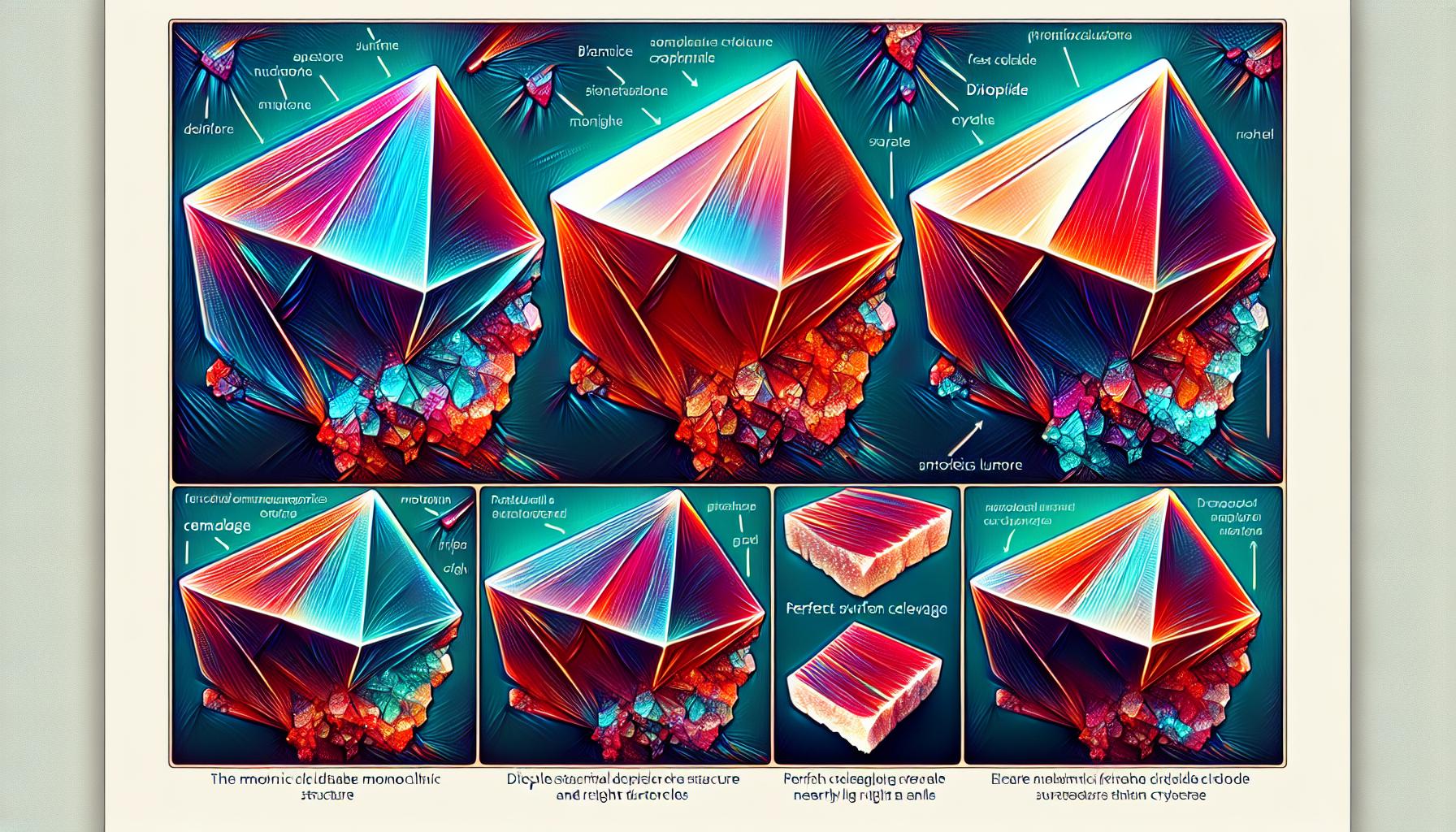
When trying to identify diopside, pay close attention to the physical characteristics that set it apart from other minerals. These characteristics are crucial in confirming the presence of diopside.
Color Variations
Diopsides are primarily known for their rich green hue, but they can also exhibit a range of colors including:
- Light green
- Yellowish-green
- Blue-green
- Brown
- Colorless
This color variation can be influenced by the presence of impurities within the crystal structure. Chrome diopsides, for instance, owe their intense green color to chromium content.
Crystal Form and Cleavage
Diopside crystals typically form in a monoclinic system, showing an elongated and columnar structure. You’ll often notice the following:
- Prismatic crystals
- Perfect cleavage in two directions at nearly 90 degrees
Due to their perfect cleavage, diopside crystals can split into flat planes, which is a distinctive feature for identification.
Luster and Surface Features
Diopside presents a vitreous to dull luster depending on the specimen’s surface condition. Some key surface features include:
- A glass-like shine on fresh surfaces
- Pitting or dullness as a result of weathering
By thoroughly examining these characteristics, you’re on your way to classifying diopside accurately in both laboratory settings and fieldwork. Remember to consider these traits in combination with the tests previously discussed to enhance the reliability of your identification process.
How Are diopside Formed?
Diopside is a product of metamorphism, forming in several geological settings. Typically, diopside is found in metamorphic rocks such as marble and gneiss, resulting from high-pressure alterations of igneous rocks that contain calcium-rich plagioclase feldspar. These conditions often occur at convergent plate boundaries where tectonic activities provide the necessary temperature and pressure.
Interestingly, diopside also crystallizes from magmas, especially those that are rich in iron and magnesium and poor in silica. These magmas, found deep within the Earth, create igneous rocks like peridotite and gabbro upon cooling. The crystalline structure of diopside is fostered by the slow cooling process, allowing the individual crystals time to grow.
Hydrothermal processes also play a role. Diopside can precipitate out of mineral-rich fluids that flow through fissures in the rock, depositing crystals in the cavities and veins. These processes can lead to the formation of gem-quality diopside, coveted for its richness in color and clarity.
Mineral enthusiasts value diopside for its formation process, which contributes to its unique characteristics. Its presence can tell a geologist a lot about the history of the rocks it resides in and the geological processes that created it. As you continue to learn how to identify diopside, understanding its formation can sharpen your identification skills.
Preparation for diopside Hunting
Gathering the Right Tools
Before you set out on your diopside hunting adventure, you’ll need to equip yourself with the necessary tools. A successful hunt is all about having the right gear to identify and collect your mineral specimens.
- Rock Hammer: A rock hammer is essential for breaking open rocks to reveal what’s inside.
- Chisel: Paired with your rock hammer, a chisel will help you to extract diopside samples carefully.
- Safety Goggles: Safety goggles will protect your eyes from flying rock fragments.
- Field Guide: Keep a field guide handy to compare your finds with known diopside characteristics.
- Magnifying Glass or Loupe: This will give you a closer look at the details of your specimens.
Remember, efficiency is key—the better prepared you are, the more likely you’ll find what you’re looking for.
Safety Considerations
You should never overlook safety, especially when on rugged terrain or dealing with tools and raw minerals. Here’s how to stay safe:
- Wear Protective Clothing: Durable gloves and a sturdy pair of boots will protect you against sharp rocks and rough ground.
- Inform Someone of Your Location: Always let someone know where you’re going and when you expect to return.
- Stay Hydrated: Bring plenty of water, as dehydration can sneak up on you, especially under a hot sun.
- First Aid Kit: A basic first aid kit is a must-have item for addressing minor injuries on the spot.
By adhering strictly to these safety tips, you can focus on the excitement of discovery without unnecessary risks.
Handling and Care of Found diopsides

Cleaning Diopsides
Once you’ve successfully located and extracted diopside specimens, the next step is to clean them to reveal their true beauty. Start with water and a soft brush to gently scrub away loose dirt. For tougher grime, you can soak the stones in warm, soapy water before brushing. Avoid harsh chemicals or abrasive materials, as they can damage the diopside’s surface.
Remember that diopsides rate a 5.5 to 6.5 on the Mohs hardness scale, which means they are susceptible to scratching from materials with a higher hardness. Be sure to use appropriate cleaning tools that will not scratch your diopside.
Storing Diopsides
Proper storage is critical for maintaining your diopsides in their natural state. Wrap each stone individually in a soft cloth or place it inside a fabric-lined jewelry box to prevent scratches. If you’re keeping multiple stones together, ensure each piece is separated to avoid them rubbing against each other.
For long-term storage, consider the following:
- Maintain a consistent temperature and humidity level
- Keep diopsides away from direct sunlight, which can fade their color over time
- Store your diopsides in a dark, dry place free from drastic temperature changes
Your careful handling and storage of diopside gems not only preserve their integrity but also keep them sparkling for years to come. As you continue on your journey with diopsides, absorb every detail through observation and meticulous care—each step is integral to understanding and appreciating these geological treasures.
Conclusion: Confirming Diopside is Real
You’ve now got the know-how to identify diopside with confidence.
Remember, proper cleaning and storage are just as crucial as recognizing your gem. Treat your diopside with the care it deserves and it’ll continue to shine brilliantly. Whether you’re a collector or a gem enthusiast, your newfound knowledge will serve you well.
Keep it safe, let it sparkle, and enjoy the beauty of your diopside for years to come.


